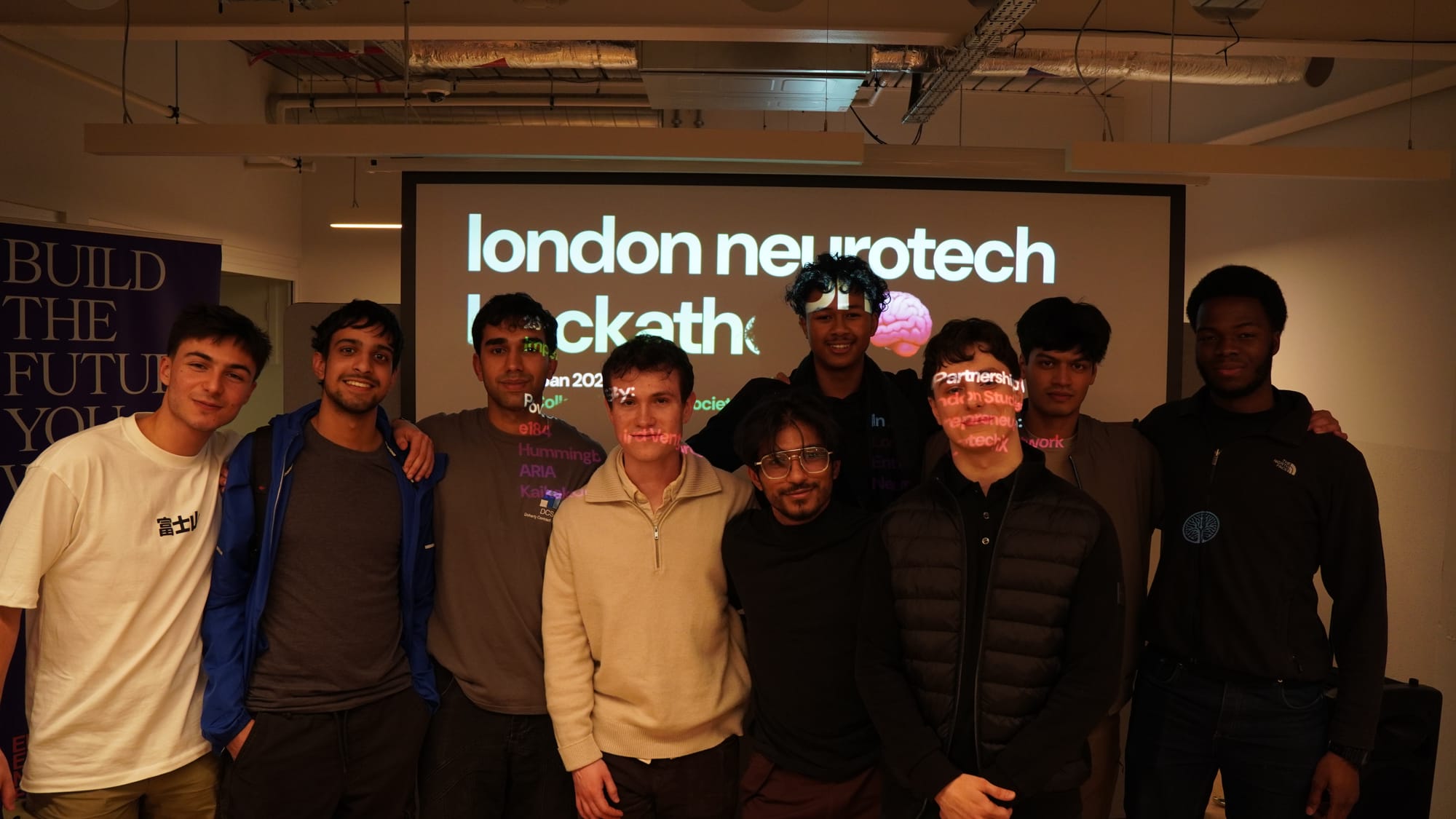Neurotech landscape: the gap between application diversity and modality uniformity
Reflections from a neurotech hackathon in London

Recently, I had the privilege of attending (and through e184, sponsoring) a standout neurotech hackathon organised by the Imperial College Neurotech Society, with support from EF, Hummingbird, NeurotechX, ARIA, and others. Events like this offer a real-time snapshot of the industry’s trajectory, both the breakthroughs and the bottlenecks.
What struck me most was the energy. Unlike some hackathons where teams chase VC funding, job offers, or cloud credits, this one was different. Builders were in it for the craft - working through the night, driven by curiosity, community, and the sheer thrill of making things work. No term sheets on the floor. Just raw (brain) hacking.
What’s being built? A glimpse into the neurotech pipeline
The projects showcased a broad spectrum of applications:
- Healthcare neurotech (7 out of 15 projects) tackled diagnostics, rehabilitation, and mental health;
- Mostly consumer productivity/wellness-related pitches explored sleep, learning, and more (see below a detailed table 1).
Table 1. London neurotech hackathon (January 2025) pitches by modality, type, function

But beyond applications, what really stood out was the shift toward closed-loop systems (10 out of 15 projects). These are neurotech setups that don’t just measure brain activity but act on it in real time - like dynamically adjusting video playback speed based on cognitive load.
The challenge: modality uniformity
Here’s where things get tricky: two-thirds of teams (10 out of 15) relied on EEG as their primary recording modality. While stimulation approaches were more diverse (ranging from transcranial electrical stimulation to haptics and microelectrode arrays), the heavy reliance on EEG highlights a core issue in neurotech: recording modalities are not developing fast enough.
EEG is accessible and widely adopted in research, but it has limitations in resolution and depth. Meanwhile, the most groundbreaking neurotech to date has come from modalities discovered decades ago - microelectrode arrays (MEAs) for single-unit recordings [1] and fMRI for hemodynamic [2]. Emerging tech like OPMs [3] is still not widely adopted, and likes of optrodes [4], and neural dust [5] is still struggling to make the leap from the labs.
Breaking the cycle: what’s next?
Unlocking neurotech’s full potential isn’t just about better software or AI. The real breakthroughs will come from hardware - new ways to interface with the brain. And that requires deeper collaboration across neuroscience, materials science, physics, and engineering.
Take optically pumped magnetometers (OPMs) as an example [3]. This promising MEG sensor has roots dating back to 1950, when Alfred Kastler introduced the concept of optical pumping - a discovery that earned him the 1966 Nobel Prize in Physics. By 1957, Bell and Bloom demonstrated that optical pumping could be used to create a magnetically sensitive atomic state, opening the door to ultra-precise magnetic field measurements. Yet, despite this foundational work, it took decades for OPMs to reach magnetic sensitivity levels comparable to SQUID systems.
This is the core challenge in neurotech today: fundamental physics breakthroughs take time, and without them, progress in brain-interface technology stalls. If we want to accelerate neurotech’s trajectory, we don’t just need better algorithms or more data - we need Nobel Prize-level discoveries in physics and materials science, paired with cutting-edge engineering and neuroscience.
At e184, we’re looking for those pushing the frontier. If you’re working on novel recording modalities, sensors, or exploring phenomena beneath them, let’s connect - because the future of neurotech won’t wait. Drop me a line at p@e184.com.
References
[1] https://www.nature.com/articles/s41378-022-00451-6
[2] https://www.nature.com/articles/s41593-023-01304-9
[3] https://www.sciencedirect.com/science/article/pii/S1053811919304550